 W
WAbrocomas was satrap of Syria for the Achaemenid king Artaxerxes II Mnemon. He may also have been satrap of Paphlagonia, with its capital at Sinope, according to the reading of some of the coinage of Sinope: the Aramaic reading "ˈbrkmw" has been identified as the name rendered in Greek as "Abrocomas", but this is not universally accepted.
 W
WAmastris also called Amastrine, was a Persian princess, and ruler of the city of Heraclea from circa 300 to her death. She was the daughter of Oxyathres, the brother of the Persian King Darius III.
 W
WAmminapes was a Parthian who was appointed satrap of the Parthians and Hyrcanii by Alexander the Great in 330 BCE.
 W
WPharismanes was a Parthian, son of Phrataphernes, who was appointed Hellenistic satrap of the Parthians and Hyrcanii after his father, circa 320 BCE.
 W
WArbinas, also Erbinas, Erbbina, was a Lycian Dynast who ruled circa 430/20-400 BCE. He is most famous for his tomb, the Nereid Monument, now on display in the British Museum. Coinage seems to indicate that he ruled in the western part of Lycia, around Telmessos, while his tomb was established in Xanthos. He was a subject of the Achaemenid Empire.
 W
WAriarathes I was the last Achaemenid Persian governor (satrap) of the province (satrapy) of Northern Cappadocia, serving from the 340s BC to 331 BC. He led defensive efforts against the Macedonian invasion, commanded by Alexander the Great, and later fought at the Battle of Gaugamela under Darius III, the last King of Kings of the Achaemenid Empire. After the fall of the Achaemenid Empire, Ariarathes continued his resistance against the Macedonians, ruling concomitantly as an Achaemenid remnant and a precursor to the Kingdom of Cappadocia. He is regarded as the founder of the Iranian Ariarathid dynasty.
 W
WAriarathes II, satrap and king of Cappadocia, son of Holophernes, fled into Armenia after the death of his uncle and adopted father Ariarathes I, ruler of Cappadocia. After the death of Eumenes he recovered Cappadocia with the assistance of Ardoates, the Armenian king, and killed Amyntas, the Macedonian satrap, in 301 BC, but was forced to accept Seleucid suzerainty. He was succeeded by Ariaramnes, the eldest of his three sons.
 W
WAriobarzanes, also spelled as Ario Barzan or Aryo Barzan and commonly known as Ariobarzanes the Brave, was an Achaemenid prince, satrap and a Persian military commander who led a last stand of the Persian army at the Battle of the Persian Gate against Macedonian King Alexander the Great in the winter of 330 BC.
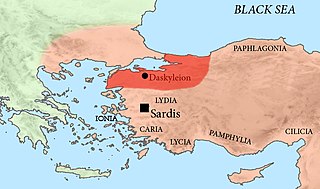 W
WAriobarzanes, Ariobarzan or spelled as Ario Barzan or Aryo Barzan, perhaps signifying "exalting the Aryans", sometimes known as Ariobarzanes I of Cius, was a Persian Satrap of Phrygia and military commander, leader of an independence revolt, and the first known of the line of rulers of the Greek town of Cius from which were eventually to stem the kings of Pontus in the 3rd century BCE. Ariobarzanes was apparently a cadet member of the Achaemenid dynasty, possibly son of Pharnabazus II, and part of the Pharnacid dynasty which had settled to hold Dascylium of Hellespont in the 470s BCE. Cius is located near Dascylium, and Cius seemingly was a share of family holdings for the branch of Ariobarzanes.
 W
WArsames was an Achaemenid Persian satrap of Cilicia in 334/3 BC. He succeeded Mazaeus in this position. He took part in the Battle of Granicus where he fought with his cavalry on the left wing, along with Arsites and Memnon of Rhodes. He was able to survive that battle and flee to the capital of Cilicia Tarsus. There he was planning a scorched-earth policy according to that of Memnon which caused the native Cilician soldiers to abandon their posts. He also decided to burn Tarsus to the ground so as not to fall in the hands of Alexander but was prevented from doing so by the speedy arrival of Parmenion with the light armored units who took the city. After that, Arsames fled to Darius who was at this time in Syria. He was slain at the battle of Issus in 333 BC.
 W
WArses, also known by his regnal name Artaxerxes IV, was the twelfth Achaemenid King of Kings from 338 to 336 BC.
 W
WArsites was Persian satrap of Hellespontine Phrygia in Achaemenid dinesty in the 4th century BC. His satrapy also included the region of Paphlagonia.
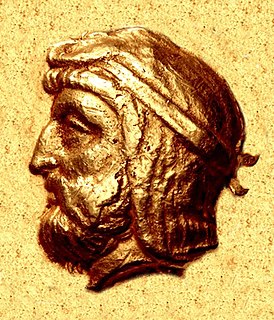 W
WArtabazos II was a Persian general and satrap of Hellespontine Phrygia. He was the son of the Persian satrap of Hellespontine Phrygia Pharnabazus II, and younger kinsman of Ariobarzanes of Phrygia who revolted against Artaxerxes II around 356 BC. His first wife was an unnamed Greek woman from Rhodes, sister of the two mercenaries Mentor of Rhodes and Memnon of Rhodes. Towards the end of his life, he became satrap of Bactria for Alexander the Great.
 W
WArtaxerxes II Mnemon was the King of Kings of the Achaemenid Empire from 404 BC until his death in 358 BC. He was a son of Darius II and Parysatis.
 W
WOchus, better known by his dynastic name of Artaxerxes III was King of Kings of the Achaemenid Empire from 358 to 338 BC. He was the son and successor of Artaxerxes II and his mother was Stateira.
 W
WArtumpara, also Arttum̃para, Artembares was an Achaemenid Satrap of Lycia circa 400-370 BCE. He was involved in the Great Satraps' Revolt on the side of central Achaemenid authority in 366-360 BCE, helping to put down the rebel Datames. He is well known for his coinage.
 W
WAtropates was a Persian nobleman who served Darius III, then Alexander the Great, and eventually founded an independent kingdom and dynasty that was named after him. Diodorus (18.4) refers to him as 'Atrapes', while Quintus Curtius (8.3.17) erroneously names him 'Arsaces'.
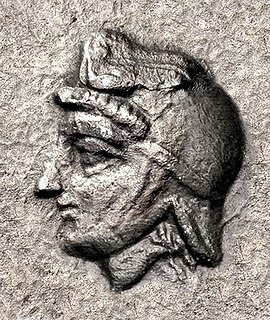 W
WAutophradates was a Persian Satrap of Lydia, who also distinguished himself as a general in the reign of Artaxerxes III and Darius III.
 W
WBarsine was daughter of a Persian father, Artabazus, satrap of Hellespontine Phrygia and a Greek Rhodian mother, who was the sister of mercenaries Mentor of Rhodes and Memnon of Rhodes. Barsine became the wife of her uncle Mentor, and after his death married her second uncle, Memnon.
 W
WDarius III was the last Achaemenid King of Kings of Persia, reigning from 336 BC to his death in 330 BC.
 W
WDatames, also known as Tarkamuwa, was an Iranian military leader, who served as the governor (satrap) of the Achaemenid satrapy of Cappadocia from 380 BC to 362 BC. A Carian by birth, he was the son of Camissares by a Paphlagonian mother. His father being satrap of Cilicia under Artaxerxes II, and high in the favour of that monarch, Datames became one of the king's bodyguards; and having in this capacity distinguished himself in the war against the Cadusii, was appointed to succeed his father in the government of his province. Here he distinguished himself both by his military abilities and his zeal in the service of the king; and reduced to subjection two officials who had revolted from Artaxerxes, Thyus, governor of Paphlagonia, and Aspis of Cataonia.
 W
WDrypetis or Drypteis, was a princess of the Achaemenid dynasty in Persia.
 W
WMazaces, also Mazakes, was the last Achaemenid satrap of ancient Egypt during the late reign of Darius III of the 31st Dynasty of Egypt.
 W
WMazaeus, Mazday or Mazaios was a Persian noble and satrap of Cilicia and later satrap of Babylon for the Achaemenid Empire, a satrapy which he retained under Alexander the Great.
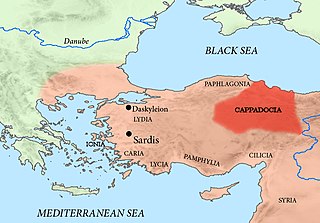 W
WMithrobuzanes was a Persian governor (satrap) of Cappadocia in the 4th century BC, during the reign of Darius III. He was probably a son of Ariarathes. As a Persian military commander he was killed at the Battle of Granicus fighting Alexander the Great.
 W
WOrontes I or Yervand I was an Bactrian nobleman, who ruled as satrap of the Achaemenid satrapy of Armenia from 401 to 344 BC. He is regarded as the ancestor of the Orontid dynasty.
 W
WOrontobates was a Persian, who married the daughter of Pixodarus, the usurping satrap of Caria, and was sent by the king of Persia to succeed him. On the approach of Alexander the Great of Macedon Orontobates and Memnon of Rhodes entrenched themselves in Halicarnassus. But at last, despairing of defending it, they set fire to the town, and under cover of the conflagration crossed over to Cos, whither they had previously removed their treasures. In addition to the island of Cos, Orontobates, retained control of the citadel at Salmacis, and the towns Myndus, Caunus, Thera and Callipolis together with Triopium.
 W
WOxyartes was a Sogdian or Bactrian nobleman of Bactria, father of Roxana, the wife of Alexander of Macedon. He is first mentioned as one of the chiefs who accompanied Bessus on his retreat across the Oxus river into Sogdiana. After the death of Bessus, Oxyartes deposited his wife and daughters for safety in a rock fortress in Sogdiana, which was deemed impregnable, but nevertheless soon fell into the hands of Alexander's forces. Alexander not only treated his captives with respect and attention, but was so charmed with the beauty of Roxana as to decide that he wanted to make her his wife. Oxyartes, on learning these tidings, is said to have hastened to make his submission to Alexander, who received him with the utmost distinction. The nuptials of his daughter with the king in 327 BC were celebrated with a magnificent feast.
 W
WPherendates II was an Achaemenid satrap of ancient Egypt during the 4th century BCE, at the time of the 31st Dynasty of Egypt.
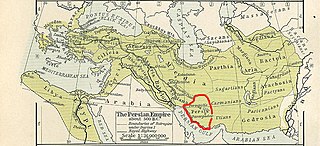 W
WPhrasaortes was a Persian satrap of Persis under Alexander the Great from circa 330 BCE. He was a son of Rheomithres. Phrasaortes replaced the Achaemenid satrap Ariobarzanes, who had confronted Alexander at the Battle of the Persian Gate, where he was killed.
 W
WRoxana ; sometimes Roxanne, Roxanna, Rukhsana, Roxandra and Roxane) was a Sogdian or a Bactrian princess of Bactria whom the Macedonian king, Alexander the Great, married, after defeating Darius III, the Achaemenian king, and invading Persia. She was born in c. 340 BC, though the precise date remains uncertain, and died in c. 310 BC.
 W
WSabaces was an Achaemenid satrap of the Achaemenid Thirty-first Dynasty of Egypt during the reign of king Darius III of Persia.
 W
WSatibarzanes, a Persian, was satrap of Aria under Darius III, king of Persia.
 W
WSisygambis was the mother of Darius III of Persia, whose reign was ended during the wars of Alexander the Great. After she was captured by Alexander at the Battle of Issus, she became devoted to him, and Alexander referred to her as "mother".
 W
WSpithridates was a Persian satrap of Lydia and Ionia under the high king Darius III Codomannus. He was one of the Persian commanders at the Battle of the Granicus, in 334 BC. In this engagement, while he was aiming a blow from behind at Alexander the Great, his arm was cut off by Cleitus the Black and he subsequently died.
 W
WStateira I was a queen of Persia as the wife of Darius III of Persia of the Achaemenid dynasty.
 W
WStateira II, possibly also known as Barsine, was the daughter of Stateira I and Darius III of Persia. After her father's defeat at the Battle of Issus, Stateira and her sisters became captives of Alexander of Macedon. They were treated well, and she became Alexander's second wife at the Susa weddings in 324 BC. At the same ceremony Alexander also married her cousin, Parysatis, daughter of Darius' predecessor. After Alexander's death in 323 BC, Stateira was killed by Roxana, his first wife.
 W
WStruthas was a Persian satrap for a brief period during the Corinthian War. In 392 BC, he was dispatched by Artaxerxes II to take command of the satrapy of Sardis, replacing Tiribazus, and to pursue an anti-Spartan policy. Accordingly, Struthas raided territory held by the Spartans and their allies, prompting the Spartans to order their commander in the region, Thibron, to begin aggressive activity against Struthas. Thibron raided successfully for a time, but Struthas eventually succeeded in ambushing one of his raiding expeditions. Struthas slew Thibron in personal combat before his cavalry routed and destroyed the rest of the Spartan army save for a few survivors that escaped to nearby cities and more that were left back at the camp due to not learning of the expedition in time to partake.
 W
WTiribazus, Tiribazos or Teribazus was an Achaemenid satrap of Western Armenia and later satrap of Lydia in western Anatolia.
 W
WTissaphernes was a Persian soldier and statesman, Satrap of Lydia. His life is mostly known from the magistral works of Thucydides and Xenophon. According to Ctesias, he was the son of Hidarnes III and therefore the great grandson of Hydarnes, one of the six conspirators who had supported the rise of Darius the Great.